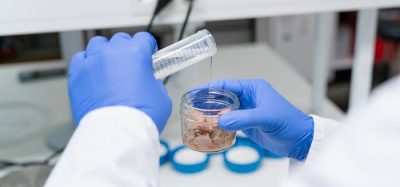Concerns rise over high PFAS levels in global water supply
- Like
- Digg
- Del
- Tumblr
- VKontakte
- Buffer
- Love This
- Odnoklassniki
- Meneame
- Blogger
- Amazon
- Yahoo Mail
- Gmail
- AOL
- Newsvine
- HackerNews
- Evernote
- MySpace
- Mail.ru
- Viadeo
- Line
- Comments
- Yummly
- SMS
- Viber
- Telegram
- Subscribe
- Skype
- Facebook Messenger
- Kakao
- LiveJournal
- Yammer
- Edgar
- Fintel
- Mix
- Instapaper
- Copy Link
Posted: 10 April 2024 | Grace Galler | No comments yet
University of New South Wales researchers have claimed that “we are likely underestimating the future impact of PFAS in the environment”.


According to latest research, the levels of PFAS (also referred to as ‘forever chemicals’) are above drinking water guidelines in global source water.
PFAS (per-and polyfluoroalkyl substances) are chemicals which are synthetic in nature, and have been utilised in consumer products globally. However in recent years, researchers have raised their concerns about PFAS, as it takes thousands of years to degrade.
According to the European Environment Agency (EEA), they can lead to health problems including liver damage, thyroid disease, obesity, fertility issues and cancer.
Commonly found in household products, such as non-stick frypans, clothing, cosmetics, insecticides, and food packaging, PFAS is also referred to a ‘forever chemical’ as once they it in the environment, or the human body, “[it] doesn’t degrade further”, according to study authors at the University of New South Wales (UNSW).
In their international study, published in Nature Geoscience, the research team assessed the levels of PFAS contamination in surface and ground water around the globe, finding that “much of our global source water exceeds PFAS safe drinking limits”.
Commenting on the findings, Denis O’Carroll, Senior Author of the study, and UNSW Engineering Professor said: “Many of our source waters are above PFAS regulatory limits. We already knew that PFAS is pervasive in the environment, but I was surprised to find out the large fraction of source waters that are above drinking water advisory recommendations.
“We’re talking above five percent, and it goes over 50 percent in some cases,” continued O’Carroll.
In the study, the scientists analysed PFAS measurements from sources around the world, including government reports, databases, and peer-reviewed literature. In total, they collated over 45,000 data points, which span over roughly 20 years.
In addition, the researchers found “high concentrations” of PFAS in Australia, with many locations above recommended drinking water levels.
O’Carroll highlighted that PFAS traces are found in source water, such as dams, but not drinking water itself. He states this is because “drinking water goes through treatment plants, some of which are designed to reduce the amount of chemicals such as PFAS in our water before it comes out of the tap”.
“But some water providers, or example, Sydney Water, don’t routinely measure the broad range of PFAS potentially in our drinking water,” explained O’Carroll.
PFAS contamination found in processed meats, teas and packaging
“Drinking water is largely safe, and I don’t hesitate drinking it. I also don’t suggest that bottled water is better, because it doesn’t mean that they’ve done anything differently than what comes out of the tap. But I certainly think that monitoring PFAS levels and making the data easily available is worthwhile,” he continued.
Overall, the study highlighted that current PFAS pollution in global water resources “could be higher than suspected” and is, in part, “ due to us only monitoring and regulating a limited number of the 14,000 PFAS in existence, and also because the levels of PFAS in consumer products are higher than expected”.
O’Carroll went on to explain there is a “real unknown amount of PFAS that we’re not measuring in the environment,” and claims “commercial products like garments and food packaging have a lot more PFAS in them than we realise.
“This means we’re likely underestimating the environmental burden posed by PFAS.”
Going forward, the team are aiming to develop their research through quantifying these levels of PFAS from commercial products in the environment. They are also currently looking to develop technologies that can degrade PFAS in drinking water systems, and looking at developing predictive models that determine where PFAS will go in the environment. The studies are set to be complete by 2026.
Now, O’Carroll had warned manufacturers and consumers alike that they “need to be careful and do our due diligence when using products containing PFAS”.
“We should have judicious use of some of these chemicals. Just because they’re available, doesn’t mean that we should use them,” concluded O’Carroll.
To read the full study click here.
New Food will be keeping its readers updates with PFAS study developments.









